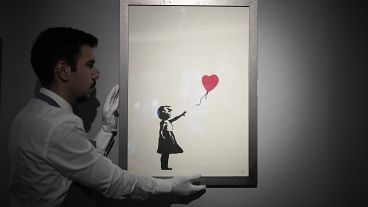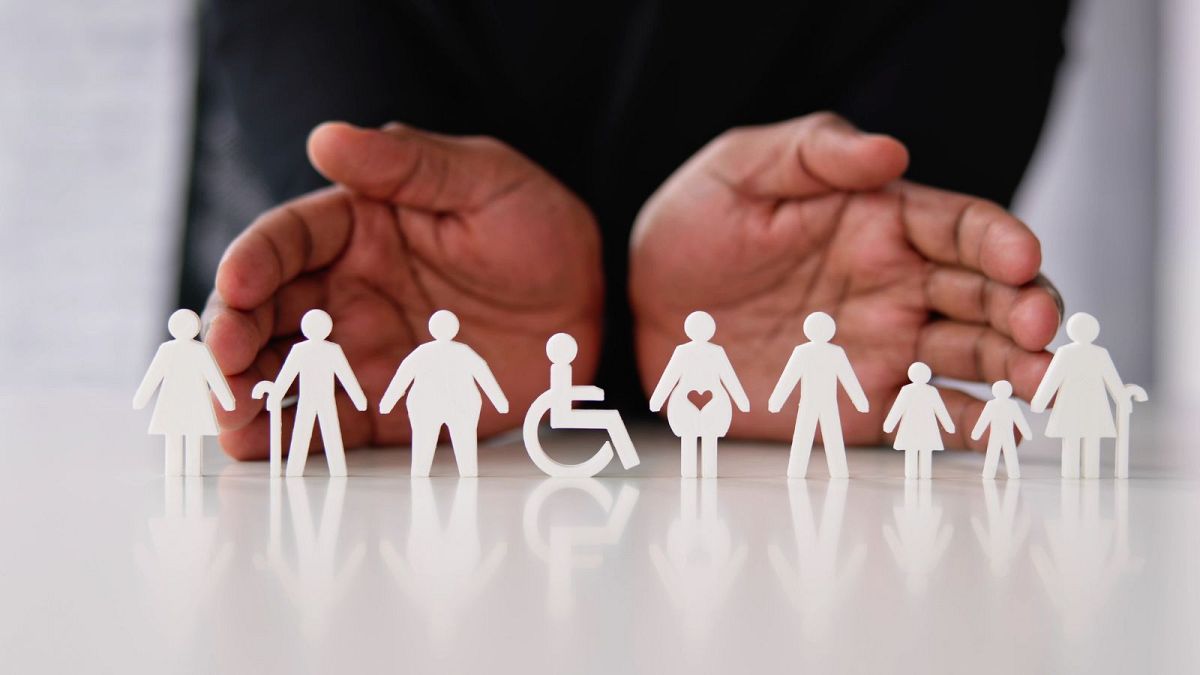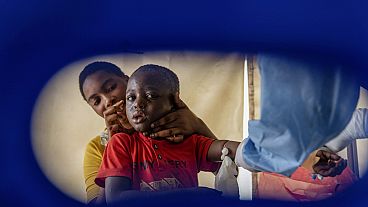As space programmes push for more inclusion for those with disabilities, other Earth-bound fields such as healthcare could follow suit.
Space exploration could be a leading example for healthcare to take steps towards more inclusion, according to new research.
Dr Farhan Asrar, an associate professor at the University of Toronto and one of the authors of the article published in Nature, talked about the discrimination that people with disabilities face in the health sector.
Asrar has been collaborating with NASA and the European Space Agency (ESA) on space health and medicine and their potential applications on Earth.
"I've really always been interested in connecting medicine and space sciences in terms of how space technology innovations in the space sector can help Earth-based applications so whether that's in health care, climate change, the environment," Asrar told Euronews Health.
There are 135 million people with disabilities in Europe, according to the World Health Organization (WHO), and they face various challenges in accessing healthcare services whether it’s financial, physical accessibility, or availability.
The European Economic and Social Committee reported last year that people with disabilities have poorer health outcomes and a poorer quality of life, tend to die earlier with a life expectancy gap of 10 to 20 years, and are also more affected by health emergencies.
"The buildings of our clinics, the equipment that we have, the training, and basically the infrastructure for healthcare is built by individuals largely without disabilities. So it's not really always taken into consideration what their needs, what their challenges might be," Asrar added.
Drawing inspiration from trailblazers
Asrar mentioned "inspiring" initiatives such as the ESA naming John McFall as the first "parastronaut" in November 2022.
McFall is currently part of the Fly! Feasibility study exploring the possibility for an astronaut with a physical disability to embark on a mission to the International Space Station (ISS).
"The study is exploring several aspects of this process, focusing on five main domains: medical, training, crew support, spacecraft operations, and ISS operations," the ESA wrote in a blog post last month.
The institution also said that to this day, it "has not identified any showstoppers" which would prevent a parastronaut from joining a spatial mission.
Asrar also mentioned his collaboration with Dana Bolles, a spaceflight engineer born with disabilities who has worked at NASA since 1995 and who is an advocate for more inclusion and one of the paper’s authors.
"We can hopefully inspire healthcare and other sectors to make the same steps that the space sector has and move towards greater inclusion and diversity," Asrar said.
Concerning the funding required to bring infrastructure or training up to par, Asrar said that he would "consider these financial changes as an investment into the future. We’d be making these changes so that people with disabilities can, bring out their full potential".















